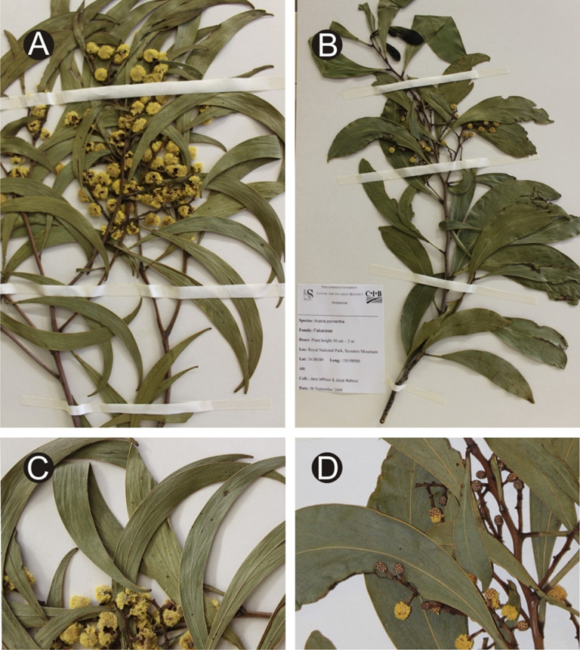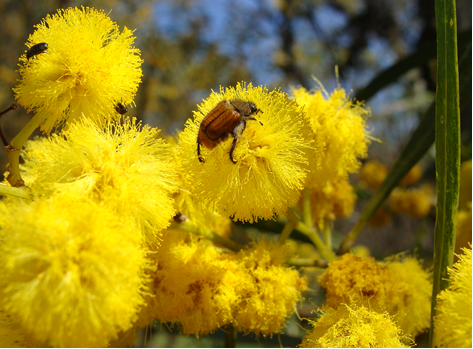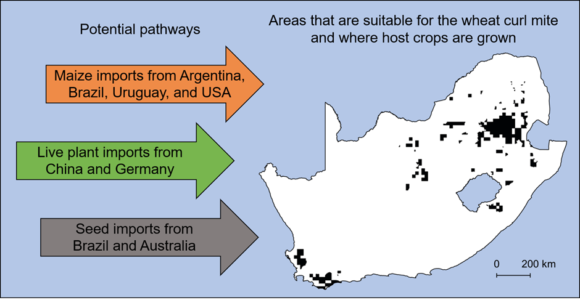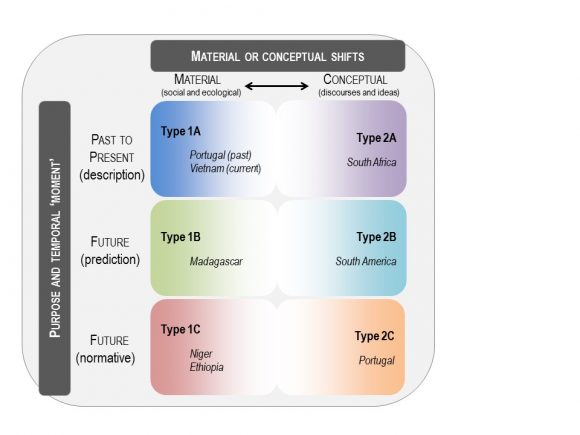29 April 2013 | By Jaco Le Roux
Invasive plants compete with native plants for important resources like water and nutrients, often outcompeting or even causing local extinction of indigenous plants. Australian acacias are one such group of plants in South Africa; they grow in dense stands which out-complete diverse indigenous plant communities. To better understand the impacts of Australian acacias and how to control and manage them, C·I·B student Joice Ndlovu and her supervisors Jaco Le Roux, Dave Richardson, and John Wilson investigated the introduction of the golden wattle (Acacia pycnantha) to South Africa. Joice and her colleagues were interested in determining three things: (1) the place of origin in Australia of the golden wattles that are found in South Africa, (2) whether native Australian populations of Acacia pycnantha are genetically similar to each other and (3) whether golden wattles in South Africa are associated with their original nitrogen fixing micro-organisms (rhizobia) from Australia or with newly acquired micro-organisms from South Africa.
In two papers published in Annals of Botany and Journal of Biogeography, Joice and her co-authors showed that native Australian populations of golden wattles are genetically diverse, and consist of two distinct ecotypes that have been separated since the Pleistocene era (ca. 100 thousand years ago). One ecotype grows in the wetter parts of the Australia (South Australia, Victoria and New South Wales) and the other in the drier parts (Victoria and the Flinders Range in South Australia). Invasive populations in South Africa originated from the ‘wetter’ ecotype with only a small proportion being from the dryland ecotype.
Being legumes, golden wattles form associations with soil bacteria known as rhizobia. These provide the plant with nitrogen in a form that it can metabolise, and in exchange draw nutrients from the plant. Golden wattles appear to use both rhizobia that it brought from Australia and newly acquired rhizobia from South African soils.
This study showed that above-ground invasions (by plants) may also be accompanied by unnoticed invasions (by their underground mutualists). Being able to form symbioses with such a large range of bacteria (from Australia and South Africa) must be to the benefit of A. pycnantha under the low nutrient conditions that are typical of soils in the Cape Floristic Region.
Read the papers
For more information, contact Jaco Le Roux at jleroux@sun.ac.za




